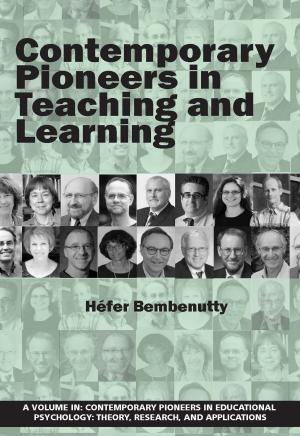Innovation and Implementation in Rural Places
School-University-Community Collaboration in Education
Nonfiction, Reference & Language, Education & Teaching, Administration| Author: | ISBN: | 9781641132152 | |
| Publisher: | Information Age Publishing | Publication: | March 1, 2018 |
| Imprint: | Information Age Publishing | Language: | English |
| Author: | |
| ISBN: | 9781641132152 |
| Publisher: | Information Age Publishing |
| Publication: | March 1, 2018 |
| Imprint: | Information Age Publishing |
| Language: | English |
This volume focuses on innovative school-university-community collaborations that are being implemented in rural places in the United States. A foundational belief that underpins the contributions to this volume is that rural communities contain within themselves the resources to promote and sustain vibrant educational endeavors. This belief has inspired a wealth of innovations that collectively offer a countervailing perspective to the view that global competitiveness is the preeminent goal of education, and that this goal is best served by “big education.” Since early last century, there has been a pervasive implicit, and sometimes explicit, assumption that rural places are bereft of the ability to educate children effectively. As repeatedly witnessed in this volume, in collaboration with universities, schools in rural places and the communities that both sustain and rely on them can appropriately configure the educational environment to optimally nurture the intellectual growth of children. The chapters in this volume are grouped into three parts that explore, in turn, the design features of innovative school-universitycommunity collaborations, some novel approaches to such collaborations, and the contours of parental and community involvement in such collaborations. Chapters discuss both larger scale collaborations that involve many school districts across wide -spread regions, and smaller scale collaborations that involve intensive engagements among the educators and members of smaller communities, and offer theoretical insights into the collaborative process itself. As mentioned above, two narrative threads run through the chapters: that effective collaborations address goals and aspirations expressed by those who are privileged to live in rural America, and that effective collaborations are oriented to building on the strengths inherent in the social fabric of those rural communities.
This volume focuses on innovative school-university-community collaborations that are being implemented in rural places in the United States. A foundational belief that underpins the contributions to this volume is that rural communities contain within themselves the resources to promote and sustain vibrant educational endeavors. This belief has inspired a wealth of innovations that collectively offer a countervailing perspective to the view that global competitiveness is the preeminent goal of education, and that this goal is best served by “big education.” Since early last century, there has been a pervasive implicit, and sometimes explicit, assumption that rural places are bereft of the ability to educate children effectively. As repeatedly witnessed in this volume, in collaboration with universities, schools in rural places and the communities that both sustain and rely on them can appropriately configure the educational environment to optimally nurture the intellectual growth of children. The chapters in this volume are grouped into three parts that explore, in turn, the design features of innovative school-universitycommunity collaborations, some novel approaches to such collaborations, and the contours of parental and community involvement in such collaborations. Chapters discuss both larger scale collaborations that involve many school districts across wide -spread regions, and smaller scale collaborations that involve intensive engagements among the educators and members of smaller communities, and offer theoretical insights into the collaborative process itself. As mentioned above, two narrative threads run through the chapters: that effective collaborations address goals and aspirations expressed by those who are privileged to live in rural America, and that effective collaborations are oriented to building on the strengths inherent in the social fabric of those rural communities.















